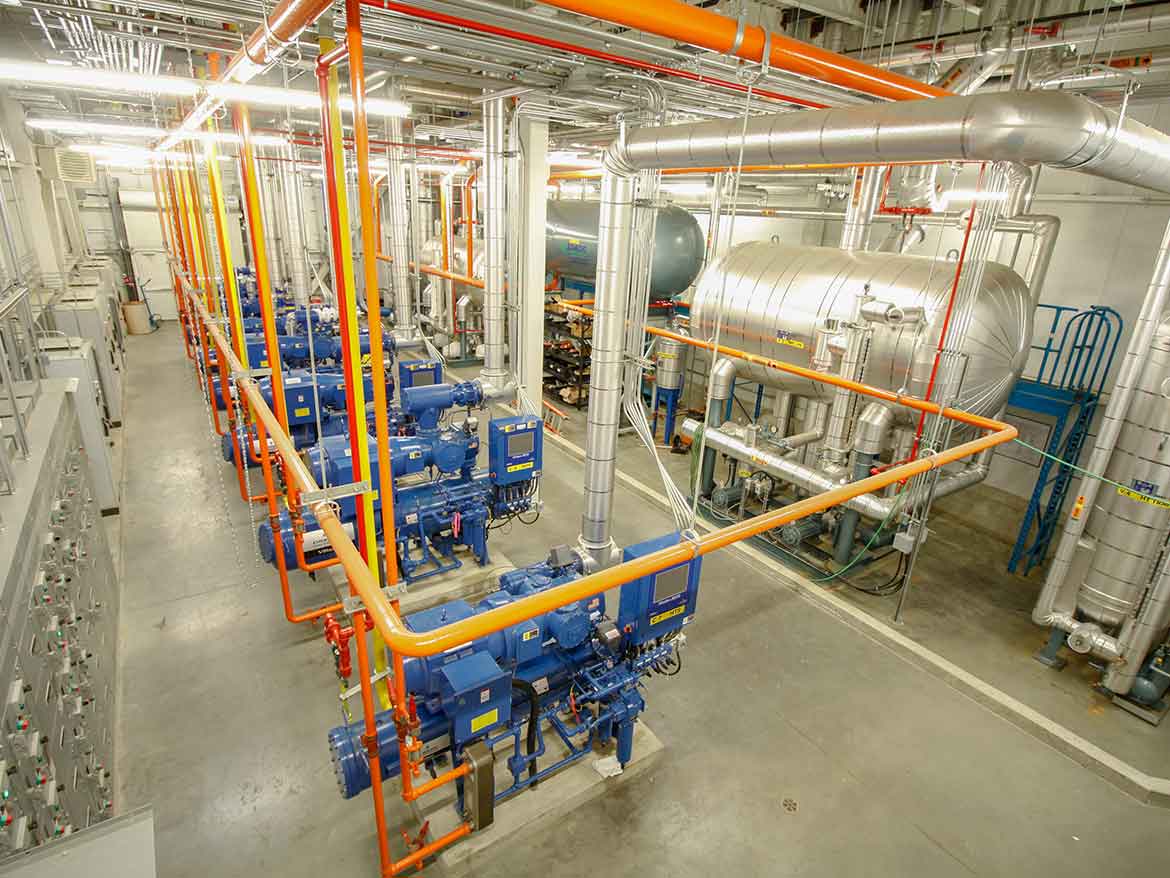Alternative Refrigerants
Alternative refrigerants are crucial for reducing greenhouse gas emissions from cooling systems. This article outlines the progress and challenges in developing greener alternatives for refrigerating our food, homes, and businesses.

View open jobs in this Solution
Example Companies
- Honeywell - Developing low-GWP refrigerants like Solstice® to reduce environmental impact.
- Daikin Industries - Investing in natural refrigerants such as ammonia and CO2, which have lower GWPs.
- Chemours - Producing Opteon™ low-GWP refrigerants for various applications.
- Trane Technologies - Developing sustainable HVAC solutions with low-GWP refrigerants.
- Carrier - Innovating in energy-efficient cooling systems using alternative refrigerants.
Overview
The biggest benchmark from Speed & Scale
Commit and enforce the end of hydrofluorocarbons (HFCs)
Use their news tracking tool to track progress
As global temperatures rise, the demand for air conditioning and refrigeration is increasing. However, the refrigerants used in these systems are major contributors to global warming. Currently, hydrofluorocarbons (HFCs) are the most commonly used refrigerants, with a global warming potential (GWP) up to 3,000 times greater than carbon dioxide (CO2).
The use of refrigerants is expected to grow by 10-15% per year, making the transition to alternative, low-GWP refrigerants crucial for mitigating climate change.
Environmental Impact
- HFCs are short-lived in the atmosphere but have a very high GWP.
- Refrigerants in landfills produce potent greenhouse gases.
- The production and disposal of refrigerants also contribute to environmental pollution.
Solutions by Sector
Residential
- Heat Pumps: Transitioning to heat pumps using low-GWP refrigerants for heating and cooling.
- Natural Refrigerants: Adopting appliances that use natural refrigerants like propane or isobutane.
- Smart HVAC Systems: Implementing intelligent systems to optimize refrigerant use and energy efficiency.
Case Studies:
- Mitsubishi Electric: Developed residential heat pumps using R32, a lower-GWP refrigerant, reducing emissions by up to 75% compared to traditional systems (Mitsubishi Electric).
- Embraco: Introduced propane-based compressors for domestic refrigerators, achieving energy savings of up to 10% compared to HFC-based models (Embraco).
- Daikin: Launched the Altherma 3 heat pump series using R-32 refrigerant, reducing the carbon footprint of residential heating and cooling (Daikin).
Commercial
- CO2 Refrigeration Systems: Implementing transcritical CO2 systems in supermarkets and food retail.
- Ammonia-based Chillers: Using ammonia as a refrigerant in large-scale cooling applications.
- Low-GWP Retrofits: Upgrading existing systems with lower-GWP alternatives.
Case Studies:
- Carrier: Installed CO2 refrigeration systems in over 10,000 supermarkets globally, reducing greenhouse gas emissions by millions of tons annually (Carrier).
- Johnson Controls: Implemented ammonia-based chillers in industrial facilities, achieving both high efficiency and zero GWP (Johnson Controls).
- Chemours: Partnered with convenience store chains to retrofit existing systems with Opteon™ XP40, reducing GWP by 65% compared to R-404A (Chemours).
Industrial
- Absorption Cooling: Utilizing waste heat for cooling in industrial processes.
- Magnetic Refrigeration: Developing systems based on the magnetocaloric effect.
- Cascade Systems: Implementing multi-stage cooling using different refrigerants.
Case Studies:
- Kawasaki Heavy Industries: Developed absorption chillers using water and lithium bromide, eliminating the need for synthetic refrigerants in large-scale cooling (Kawasaki Heavy Industries).
- Cooltech Applications: Demonstrated magnetic refrigeration technology in commercial refrigerators, achieving energy savings of up to 50% (Cooltech Applications).
- GEA: Implemented ammonia/CO2 cascade systems in food processing plants, significantly reducing refrigerant charge and improving energy efficiency (GEA).
Progress Made
- Development of new, low-GWP synthetic refrigerants like HFO-1234yf and R-32.
- Increased adoption of natural refrigerants such as CO2, ammonia, and hydrocarbons.
- Improved energy efficiency in cooling systems, reducing overall emissions.
Lessons Learned
- Regulatory Compliance: Navigating complex regulations and standards is crucial for the adoption of alternative refrigerants.
- Training and Education: Technicians and engineers need proper training to handle and implement new refrigerants safely.
- System Compatibility: Ensuring that existing systems can be retrofitted or are compatible with new refrigerants.
- Public Awareness: Increasing awareness about the environmental benefits and safety of alternative refrigerants.
- Research and Development: Continuous R&D is essential to improve the performance and cost-effectiveness of alternative refrigerants.
Challenges Ahead
- Cost: Alternative refrigerants can be more expensive than traditional HFCs.
- Infrastructure: Developing the necessary infrastructure for the production, distribution, and recycling of alternative refrigerants.
- Performance: Ensuring that alternative refrigerants perform as well as or better than traditional refrigerants in various applications.
- Safety: Addressing safety concerns associated with the use of natural refrigerants, such as flammability and toxicity.
- Market Adoption: Encouraging widespread adoption of alternative refrigerants in both developed and developing markets.
Best Path Forward
- Policy Support: Implement policies and regulations that incentivize the use of low-GWP refrigerants.
- Industry Collaboration: Foster collaboration between manufacturers, policymakers, and industry stakeholders to promote the adoption of alternative refrigerants.
- Public Awareness: Increase public awareness about the environmental and economic benefits of alternative refrigerants.
- Research and Development: Invest in R&D to improve the performance, safety, and cost-effectiveness of alternative refrigerants.
- Training and Education: Provide comprehensive training programs for technicians and engineers to ensure safe and effective implementation of alternative refrigerants.
Prominent supporters include Honeywell, Daikin Industries, Chemours, Trane Technologies, and Carrier.
Image credit: Clean Energy Wire